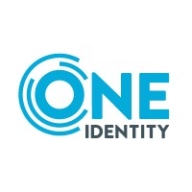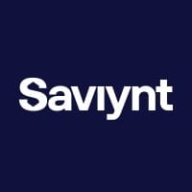

One Identity Active Roles and Saviynt compete in the identity and access management space. Saviynt appears to have an upper hand in offering robust access governance and flexible deployment models.
Features: One Identity Active Roles stands out for its active directory management, dynamic group handling, and extensive integration capabilities. The workflows support comprehensive user management. Saviynt excels in role-based access, identity lifecycle management, and offers user-friendly application onboarding and certification features. Built-in reporting and database utilities add significant value.
Room for Improvement: One Identity Active Roles could benefit from improved web console customization, support for multiple scripting languages, and the reintroduction of the attestation feature. Additionally, its workflows could include more templates for ease of modification. Saviynt needs better customization options, improved documentation, and more adept technical support. Simplification of its complex integration process is also needed.
Ease of Deployment and Customer Service: One Identity Active Roles is mainly on-premises, while Saviynt offers cloud and hybrid deployment options, providing more flexibility. Active Roles is praised for its knowledgeable support, though there are some limitations in first-call resolution. Saviynt's support is recognized, but users call for better technical assistance and improved documentation.
Pricing and ROI: One Identity Active Roles is perceived as expensive but offers a competitive user-based licensing model that delivers ROI through automation and risk reduction. Saviynt, slightly costlier, provides extensive features for the price and a pay-as-you-go model with multiple plans. Its ROI is tied to comprehensive access management and security features, ensuring compliance and data protection.
| Product | Market Share (%) |
|---|---|
| Saviynt | 14.2% |
| One Identity Active Roles | 5.2% |
| Other | 80.6% |


| Company Size | Count |
|---|---|
| Small Business | 7 |
| Midsize Enterprise | 2 |
| Large Enterprise | 17 |
| Company Size | Count |
|---|---|
| Small Business | 5 |
| Midsize Enterprise | 5 |
| Large Enterprise | 15 |
One Identity Active Roles is a highly regarded solution for Active Directory (AD) security and account management. One Identity Active Roles will enhance group, account, and directory management while eradicating the need for manual processes. The end result is a significant increase in the overall speed, efficiency, and security of the organization.
Using One Identity Active Roles, users can:
Managing accounts in AD and Azure AD can be tremendously challenging; continually keeping these important systems safe and secure presents an even greater challenge. Traditional tools can be inefficient, error-prone, and very disjointed. In today’s robust marketplace, organizations are finding it somewhat difficult to keep pace with the constant access changes in a hybrid AD ecosystem. Additionally, there are significant security issues to consider (government compliance, employee status/access changes, and other confidential business requirements). And, of course, there is a requirement to properly manage Active Directory and Azure Active Directory access in addition to managing all the other numerous SaaS and non-Windows applications that organizations use today.
Users can easily automate all of these tedious, mundane administrative tasks, keeping their systems safe and error-free. Active Roles ensures users can perform their job responsibilities more effectively, more efficiently, and with minimal manual intervention. Active Roles was created with a flexible design, so organizations can easily scale to meet your organizational needs, today, tomorrow, and in the foreseeable future.
Reviews from Real Users
A PeerSpot user who is a Network Analyst at a government tells us, “It has eliminated admin tasks that were bogging down our IT department. Before we started using Active Roles, if one of our frontline staff members deleted a user or group, it could take several hours to try to reverse that mistake. Whereas now, the most our frontline staff can do is a deprovision, which just disables everything in the background, but it's still there. We can go in and have it back the way it was two minutes later. Instead of it taking two hours, it only takes two minutes.”
Becky P., Sr Business Analyst at George Washington University, shares, “In addition, with the use of workflows and the scheduled tasks, we were able to automate and centrally manage a number of the processes as well as utilize them to work around other product limitations. Those include, but are not limited to syncing larger groups, which have 50,000 plus members, to Azure AD. We sync up to Azure AD using ARS. If we had not already had ARS in place, it would have been impossible for us to have done so in the time period we did it in. We did it in under six months. ARS probably saves us at least two weeks out of every month. It's reduced our workload by 50 percent, easily.”
Saviynt is an intelligent, cloud-first identity governance & access management solution. The solution is designed to help organizations quickly scale cloud initiatives and solve security and compliance challenges. Saviynt offers identity governance, granular application access, cloud security, and privileged access to secure your company’s ecosystem and provide a seamless user experience.
Saviynt Features
Saviynt has many valuable key features. Some of the most useful ones include:
Saviynt Benefits
There are several benefits to implementing Saviynt. Some of the biggest advantages the solution offers include:
Reviews from Real Users
Below are some reviews and helpful feedback written by Saviynt users.
An Identity and Access Management Specialist at a non-tech company states, "The dedicated Freshdesk platform is a user community and a step in the right direction for offering learning resources. Saviynt has a lot of potential with many features available for users."
A Principal Consultant at a tech services company says, "It's a highly functional system and a very well rounded solution. The onboarding of applications is solid. Their user access reviews are very good. Their role-based model and their identity life cycle stuff are solid.”
PeerSpot user Amimesh A., Senior Associate at a tech services company, mentions, “The most valuable feature is the ease of implementation. This product works well out of the box and if you don’t want to do a lot of configuration then this is the best tool. The reporting features are good.”
Irappa H., Manager at a computer software company, comments, “The most valuable features are the workflows and certification.”
We monitor all User Provisioning Software reviews to prevent fraudulent reviews and keep review quality high. We do not post reviews by company employees or direct competitors. We validate each review for authenticity via cross-reference with LinkedIn, and personal follow-up with the reviewer when necessary.